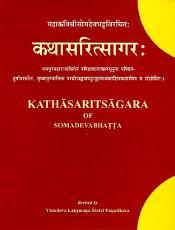ॐ श्री गुरुभ्यो नमः ॐ श्री शिवानन्दाय नमः ॐ श्री चिदानन्दाय नमः ॐ श्री दुर्गायै नमः
Source of all Images in this Blog-post : Google Images : ‘Google Image Search’ will reveal the multiple sources of every single image shared in this Blog. For more details, kindly see ‘Disclaimer‘
Introduction
In the realm of Indian literature, the Kathasaritsagara, often translated as “Ocean of the Streams of Stories,” stands as a monumental work. This 11th-century collection, attributed to the Kashmiri Sanskrit scholar Somadeva, is a labyrinth of legends, fairy tales, and folk stories that has captivated readers and storytellers for centuries. Its significance goes beyond mere entertainment; it is a cultural and literary artifact that offers a glimpse into the medieval Indian mind and society.
Buy Kathasaritsagara books online from Amazon India
Origins and Authorship
Somadeva, believed to have composed the Kathasaritsagara in the 11th century, was a court poet in Kashmir. His compilation was not an act of original creation but rather a gathering of stories that had been orally transmitted for generations. These tales were likely collected from various sources, including earlier texts like the Brihatkatha, written by Gunadhya in a language called Paisachi, which is no longer extant.
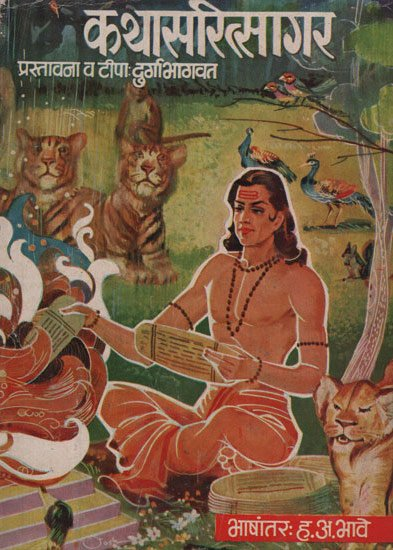
Structure and Content
The Kathasaritsagara is an anthology of stories, woven into a larger narrative framework. It begins with the tale of a young prince named Naravahanadatta who is destined to become the emperor of the vidyadharas (supernatural beings). The stories are structured as tales within tales, where one story leads to another, often told by characters within the narrative to illustrate a point or to entertain.
This intricate structure is not just a literary device but reflects the Indian tradition of storytelling, where layers of meaning and narrative are built over each other, creating a rich tapestry of tales.
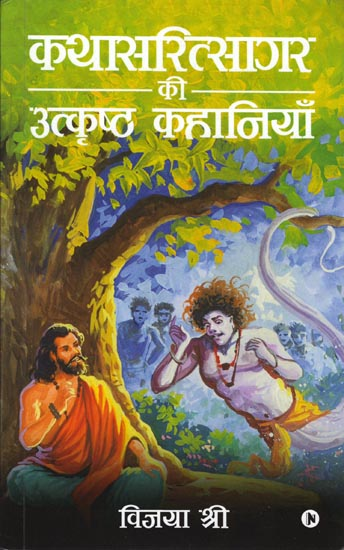
Themes and Motifs
The stories in the Kathasaritsagara traverse a wide range of themes. They explore love and betrayal, wisdom and folly, heroism and cowardice, and the myriad facets of human nature. The tales are often interlaced with moral lessons, but they are primarily meant to entertain.
Magic and the supernatural play a significant role in these stories. There are tales of flying palaces, magical creatures, and gods and goddesses intervening in the lives of mortals. These elements not only add a fantastical dimension to the stories but also reflect the religious and cultural milieu of medieval India.
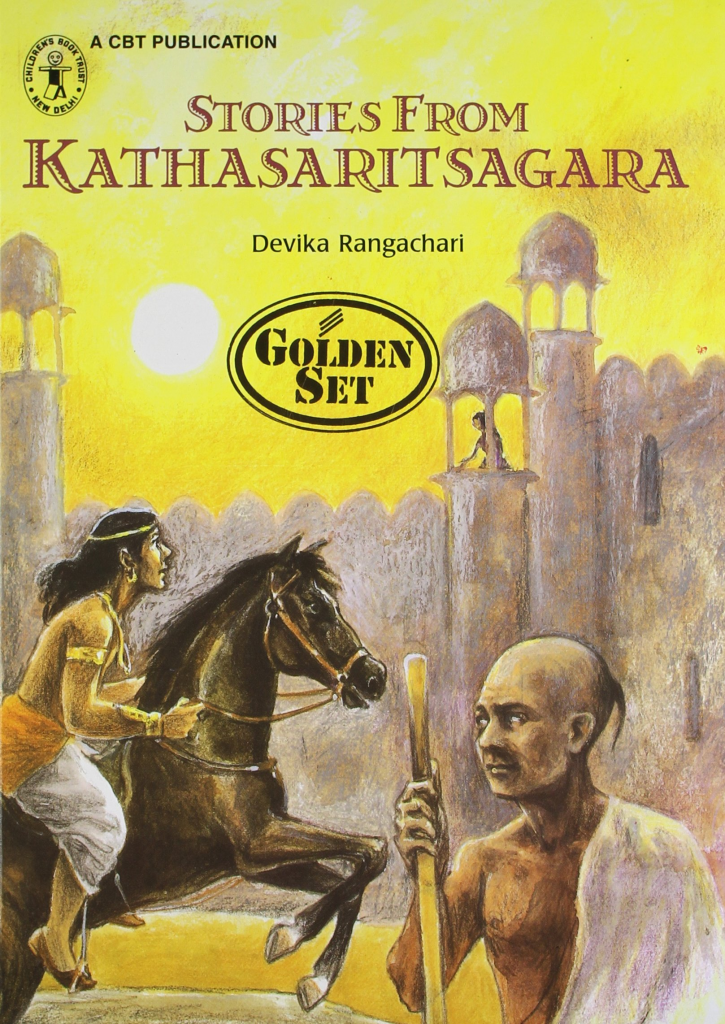
Cultural and Literary Impact
The Kathasaritsagara is not just a collection of stories; it is a repository of cultural knowledge. It provides insights into the social structures, legal systems, and everyday life of medieval India. The depiction of women, caste dynamics, and the interplay of religion and culture offer a window into a bygone era.
Literarily, the Kathasaritsagara has influenced many writers and has been a source for subsequent literature in Sanskrit as well as regional languages. Its tales have traveled far beyond the Indian subcontinent, influencing storytelling traditions in other parts of Asia and even in the West.

Comparative Analysis: Kathasaritsagara and Other Ancient Indian Story Collections
The Kathasaritsagara, with its labyrinthine structure and elaborate narrative style, presents a stark contrast to other ancient Indian story collections such as the Panchatantra, Hitopadesha, Vetala Panchavimshati, and Simhasana Dvatrimsika (Simhasan Battisi).
While the Kathasaritsagara is an expansive ocean of interwoven tales, often fantastical and aimed primarily at entertainment, the Panchatantra and Hitopadesha are more didactic, structured primarily to impart moral and practical wisdom through animal fables and simple stories. These latter collections are more straightforward, each story typically serving a clear moral lesson, often related to statecraft and personal conduct. In contrast, the Vetala Panchavimshati (Twenty-five Tales of the Vetala) and Simhasana Dvatrimsika focus on the themes of ingenuity and wit.
These collections involve a central narrative framing a series of short stories, each posing a puzzle or a moral dilemma. The Vetala Panchavimshati, for instance, revolves around a king attempting to capture a vetala (spirit), who tells a series of tales that end with a question. Similarly, Simhasana Dvatrimsika comprises tales told by thirty-two statues to a king. Despite their varied approaches and themes, all these collections reflect the richness of ancient Indian literature and its profound impact on storytelling across cultures.
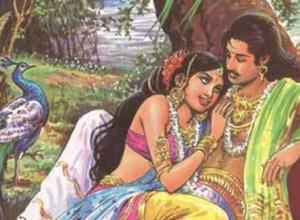
Buy Kathasaritsagara books online from Amazon India

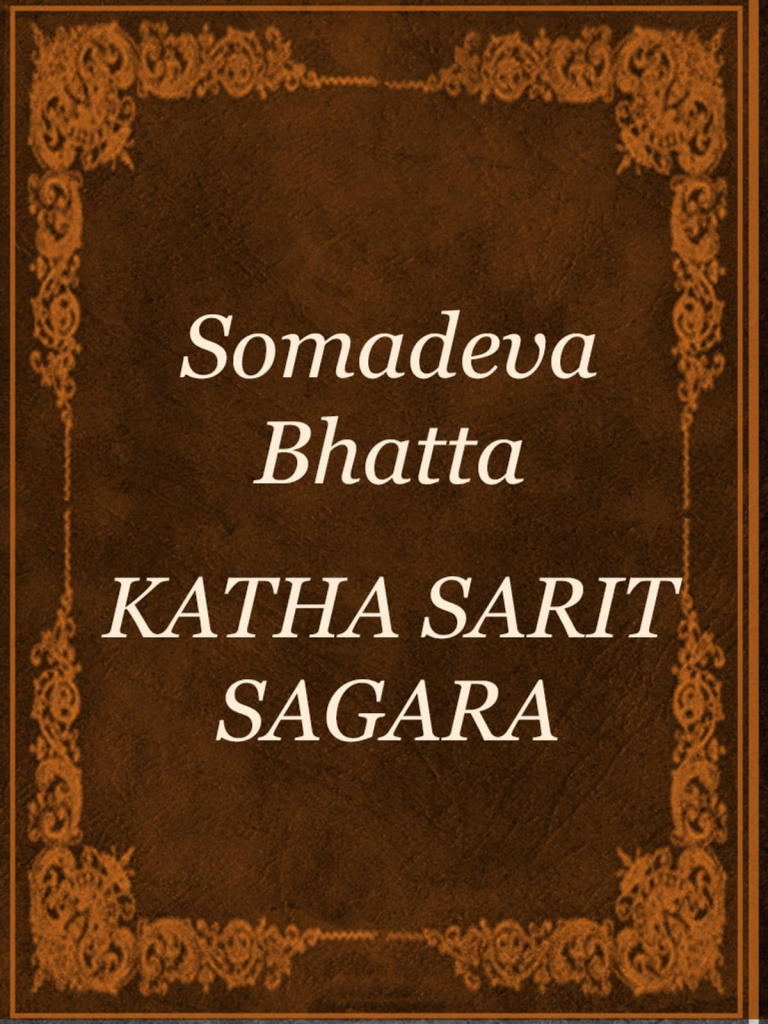
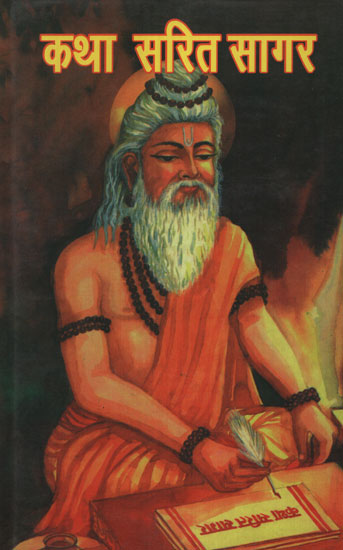
Exploring the 18 Books of Kathasaritsagara
The Kathasaritsagara, a grand tapestry of stories, is divided into 18 books, each with its unique flavor and narrative style. Here’s a brief introduction to each of these books, outlining their distinct themes and highlights:
- Kathapitha (The Foundation of the Stories): This initial book lays the groundwork for the entire collection. It introduces the primary narrative with the birth of Naravahanadatta and sets the stage for the subsequent tales.
- Kathamukha (The Entrance to the Stories): Serving as an extension to the foundation, this book delves deeper into the early life of Naravahanadatta and introduces additional characters and subplots.
- Lavanaka (The Sea): Focused on adventures at sea, this book is replete with tales of maritime journeys, encounters with supernatural beings, and explores the theme of exploration and adventure.
- Naravahanadattajanana (The Birth of Naravahanadatta): This book returns to the story of Naravahanadatta, detailing his birth and early life, crucial for understanding his later adventures.
- Caturdari (The Four Gates): It presents a series of tales that unfold at four different gates, each gate opening to a new set of stories and characters.
- Madanamancuka (The Bud of Love): Central to this book are tales of romance and love, woven around the youth and romantic escapades of Naravahanadatta.
- Ratnaprabha (The Light of Jewels): This book shines with stories that are like jewels, filled with tales of wealth, opulence, and the human fascination with material treasures.
- Saktiyasas (The Power of Magic): As the name suggests, this book delves into stories involving magical powers, enchantments, and the supernatural.
- Vela (The Time): This book discusses the concept of time through various stories, emphasizing the impermanence and cyclic nature of life.
- Suratamanjari (The Bouquet of Love): Continuing the theme of love and romance, this book narrates tales of passion, love, and the complexities of relationships.
- Madiravati (The Intoxicating City): Set in a mythical city, this book is filled with intriguing urban tales, reflecting the social and cultural life of ancient cities.
- Mahabhisheka (The Great Consecration): This book revolves around grand ceremonies and consecrations, often used as backdrops for the unfolding of significant events and stories.
- Patalavati (The Lady of the Underworld): Here, the narratives take a turn towards the mystical and the underworld, exploring themes of death and the afterlife.
- Surangama (The Lovely Tunnel): Focused on adventures through mystical tunnels and hidden passages, this book takes readers on a journey through unseen worlds.
- Kesava (The Long-haired One): Named after one of the names of Lord Vishnu, this book intertwines tales with elements of divinity and religious significance.
- Bhagavatidatta (Given by the Goddess): This book is characterized by stories involving divine interventions and blessings from goddesses.
- Sasankavati (The City of the Moon): The moon, often a symbol of beauty and mystery in Indian literature, is central to the stories of this book, which are imbued with themes of love and mysticism.
- Visamasila (The Hard Stone): Concluding the Kathasaritsagara, this book ties together loose ends, bringing resolutions to the stories, and often reflecting on the moral and philosophical lessons from the entire collection.
Each book of the Kathasaritsagara is a universe in itself, filled with stories that collectively contribute to the oceanic expanse of this timeless literary masterpiece.
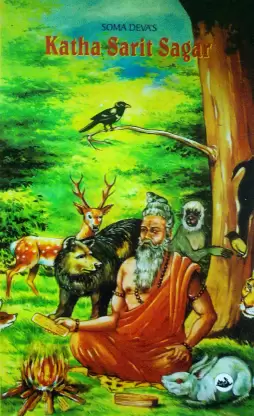

Film and TV Adaptations of Kathasaritsagara
The rich tapestry of tales in the Kathasaritsagara has provided a fertile ground for adaptations in film and television, though perhaps not as extensively as other Indian epics. These adaptations often take creative liberties, focusing on individual stories or amalgamating various tales to suit the narrative needs of the medium.
In Indian cinema, elements from these stories have been woven into films, typically under the genre of fantasy or historical drama, where the mystical and moral elements of the tales align well with cinematic storytelling.
Television adaptations, especially in the form of serials, have occasionally explored these stories, offering episodic renditions that delve into the moral and philosophical aspects of the tales. These adaptations, both in film and TV, not only bring the ancient tales to a contemporary audience but also highlight the timeless nature of their themes, such as love, valor, and wisdom.
However, compared to the more widely known epics like the Mahabharata and Ramayana, the Kathasaritsagara’s presence in mainstream media is somewhat limited, suggesting a potential area for future exploration by filmmakers and TV producers interested in bringing the depth and diversity of Indian folklore to wider audiences.
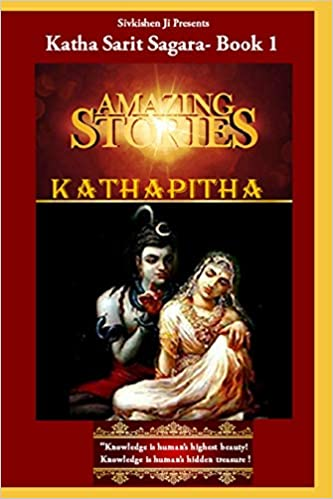
Potential in Kathasaritsagara for Film and TV Adaptations
The Kathasaritsagara, a literary masterpiece of Indian folklore, offers a vast and largely untapped potential for film and television adaptations. Each story within this collection is a unique blend of fantasy, romance, adventure, and moral wisdom, presenting an opportunity for creative storytelling in the visual media. Unlike the frequently adapted epics like the Mahabharata and Ramayana, the Kathasaritsagara’s tales are relatively less explored in mainstream media, offering fresh and diverse narratives.
The potential for adapting these stories lies in their intricate storytelling, rich characters, and the blend of the supernatural with moral and philosophical themes. They can be transformed into compelling visual narratives that resonate with contemporary audiences. For filmmakers and TV producers, these tales provide a new avenue to introduce global audiences to the lesser-known aspects of Indian folklore and mythology.
Adapting the Kathasaritsagara could also serve as a cultural bridge, bringing the rich heritage of Indian storytelling to a worldwide audience. In an age where audiences are constantly seeking new stories and perspectives, exploring this collection could set a new trend in both Indian and international media. It’s an opportunity to not only entertain but also preserve and popularize an invaluable part of literary history.
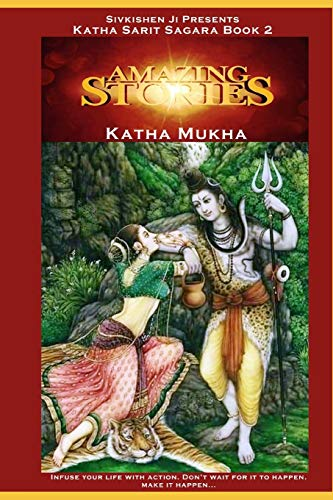
Global Journey of Kathasaritsagara Tales
Like the Panchatantra, the tales of the Kathasaritsagara have journeyed far beyond their Indian origins, spreading across various cultures and regions of the world. This dissemination can be traced to the translations and adaptations of these stories in different languages and forms.
As traders, scholars, and travelers moved along the Silk Road and other ancient trade routes, they carried these tales with them, leading to their integration into the folklore and literary traditions of different countries. Notable among these is the influence of the Kathasaritsagara on Middle Eastern and European storytelling traditions.
Elements from these tales can be found in Arabian Nights, also known as The Thousand and One Nights, which further influenced Western literature. This cross-cultural journey of the Kathasaritsagara stories highlights not only their universal appeal but also the interconnectedness of ancient world cultures through the shared medium of storytelling. Their ability to adapt and resonate across diverse cultural landscapes speaks to the timeless and universal nature of their themes,
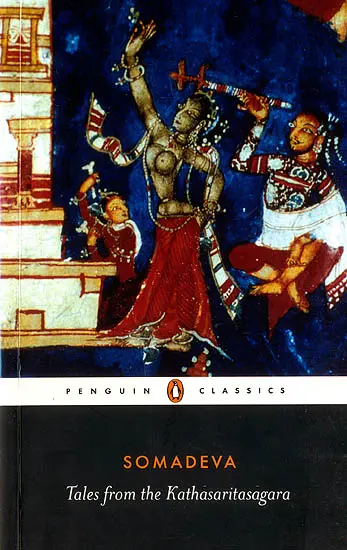
Conclusion
The Kathasaritsagara remains a testament to the richness of Indian storytelling and the enduring appeal of its narratives. It is not only a cherished part of India’s literary heritage but also a vibrant source of inspiration and enjoyment for readers and listeners across the world. In its pages, one finds not just stories, but the very essence of human experience, rendered through the imagination and creativity of a culture steeped in storytelling tradition.
Buy Kathasaritsagara books online from Amazon India
